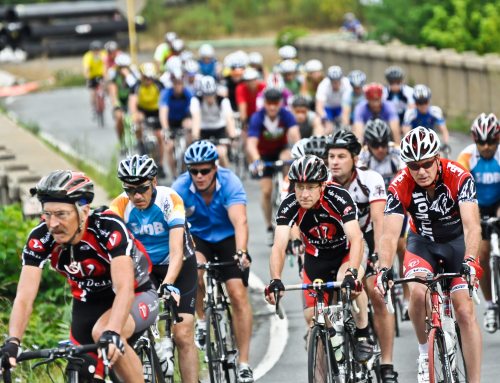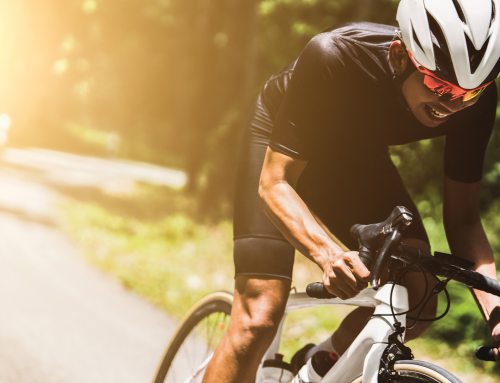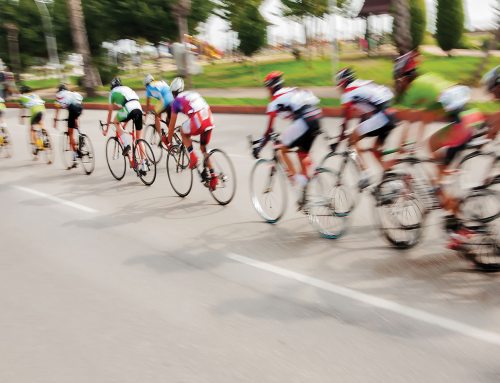By Thomas Henson Jr.
If you’re a serious cyclist, someday you’ll probably get inspired to attempt a century — a one-day, 100-mile ride. Or perhaps you’ve done a few centuries and want to try something longer, such as a multi-state ride with overnights. Whatever your specific goal is, staying safe and healthy will require lots of planning.
Getting Ready for the Ride
I’ve ridden several centuries, and each year I participate in the American Diabetes Association’s North Carolina Tour de Cure, a two-day, 200-mile fundraising ride. After so many long-distance rides, I know what to expect, and it is never easy. I still feel physically exhausted and psychologically wrung out at the end of the cycling day. That’s why, when it comes to preparing for a long-distance ride, my personal mantra is “No Surprises.” That means I hope for the best, but plan for the worst.
Work up to it. You can’t ride five miles a day and expect to jump immediately into a 100-mile ride — your body won’t be able to handle it. As with any physical challenge, you’ll need to build your strength and stamina.
- Increase the distance you ride a little at a time over the course of several weeks until you can comfortably and regularly ride at least 50 percent of your goal. Create a series of small, intermediate goals to amp up your motivation before the big ride.
- Work on muscle strength and aerobic capacity by spending time in the gym lifting weights and running on a treadmill. And improve flexibility by stretching or doing yoga. Any kind of cross-training physical activity will help your cycling performance.
- Schedule rides with others to help you stick to the training plan — it’s so easy to lose your initiative if you don’t have friends to support you.
Get a tune-up. Check tires, gears, brakes and all other moveable parts to make sure they are in good working order. If you can’t do it yourself, make an appointment at your local bike shop. (While you’re there, have them assess the fit of your bike.)
Invest in appropriate clothing. If you’re planning to bike around the neighborhood, clothing doesn’t really make a difference — jeans and a T-shirt will do. But for a long ride, proper clothing can mean the difference between a body that is simply tired, and a body that is chafed, blistered, dehydrated and “walking funny.” Absolute necessities: good-fitting shoes, padded cycling shorts, and a cycling jersey made of material that wicks away the sweat. Consider: padded gloves.
Get your gear together. If you’re even considering a century, then chances are you have everything you need to maintain your bike. On a long trip, you’ll need to have portable gear to pack for the trip, including a puncture repair kit, extra tube, pump, CO2 inflator, tire levers and multi-tool. (If you’re not used to changing a tire or fixing a flat, make time to practice before the ride.) You’ll also want lights for night riding, high-energy foods, easy-access water bottles, and a bike manual loaded on your cell phone.
Map your route. Regardless of whether you’re on a pre-marked, organized ride or you’re forging your own path, make sure you know the route well before beginning. Drive the route beforehand — better yet, ride sections of it — so you’ll know what terrain and road conditions to expect. If it’s an overnight ride, make sure you know the motels or campsites where you can stop for the night. Load the map and motel contact information into your cellphone.
Get yourself checked. If you have a chronic illness, or if you haven’t exercised in a while, get a medical check-up before beginning your long-distance training program just to make sure it’s safe.
On the day of the ride…
- In addition to all the gear, carry some cash and an identification card. In the event of an accident, you can’t rely on your cellphone for ID because it could become smashed in the crash.
- Don’t be bullied into riding at a pace too fast for you. If your riding partners don’t slow down for you, then either let them go on ahead or quit the ride.
- Stop every 10 to 20 miles to snack, drink and get a quick rest — about 10 to 15 minutes. Don’t hold still for too long or your muscles will start to cramp up.
Leave your ego at home. Be an athlete, not a warrior. Take care of yourself on the ride, and if necessary, call for help. Remember that cycling is for life — there are no “once in a lifetime” rides. If this one doesn’t work out, there will be another opportunity. Stay healthy, and ride safe!
# # #
Thomas Henson Jr. is an avid cyclist, and finds much happiness in bike rides with his family and friends. He leads the complex injury litigation department of HensonFuerst Attorneys. He can be contacted at ThomasHenson@lawmed.com.






